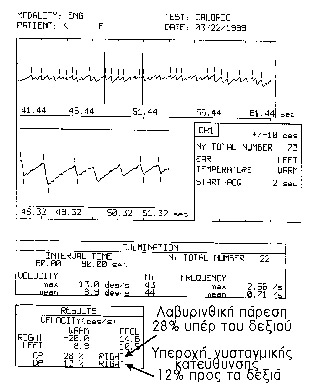Evaluation of the organ of balance (Electronystagmography)

In selected cases of vertigo, the doctor needs to evaluate the organ of balance, which is the inner ear (posterior labyrinth). The test is based on the fact that labyrinthine vertigo induces automatic rhythmic movements of the eyes, known as nystagmus.
A special device pours water inside the ear canal, in temperature slightly higher than the body. The temperature difference stimulates the inner ear, which responds with vertigo and nystagmus. Special electrodes, fixed around the eyes, record the movements of th eyes and the nystagmus curve is produced. The procedure is repeated with cold water. By the end of the test, four curves are drawn, one for hot and one for cold water for each ear. The computer calculates the reactivity of each labyrinth and the direction of the nystagmus and compares the two sides.
From the above description, it is shown that the test evokes vertigo, which lasts for a few seconds for each phase. Therefore we advice the patients to be starved during the procedure. Although usually diziness has subsided completely at the end of the test, we recommend that the patient is escorted and he/she will not drive leaving the office.